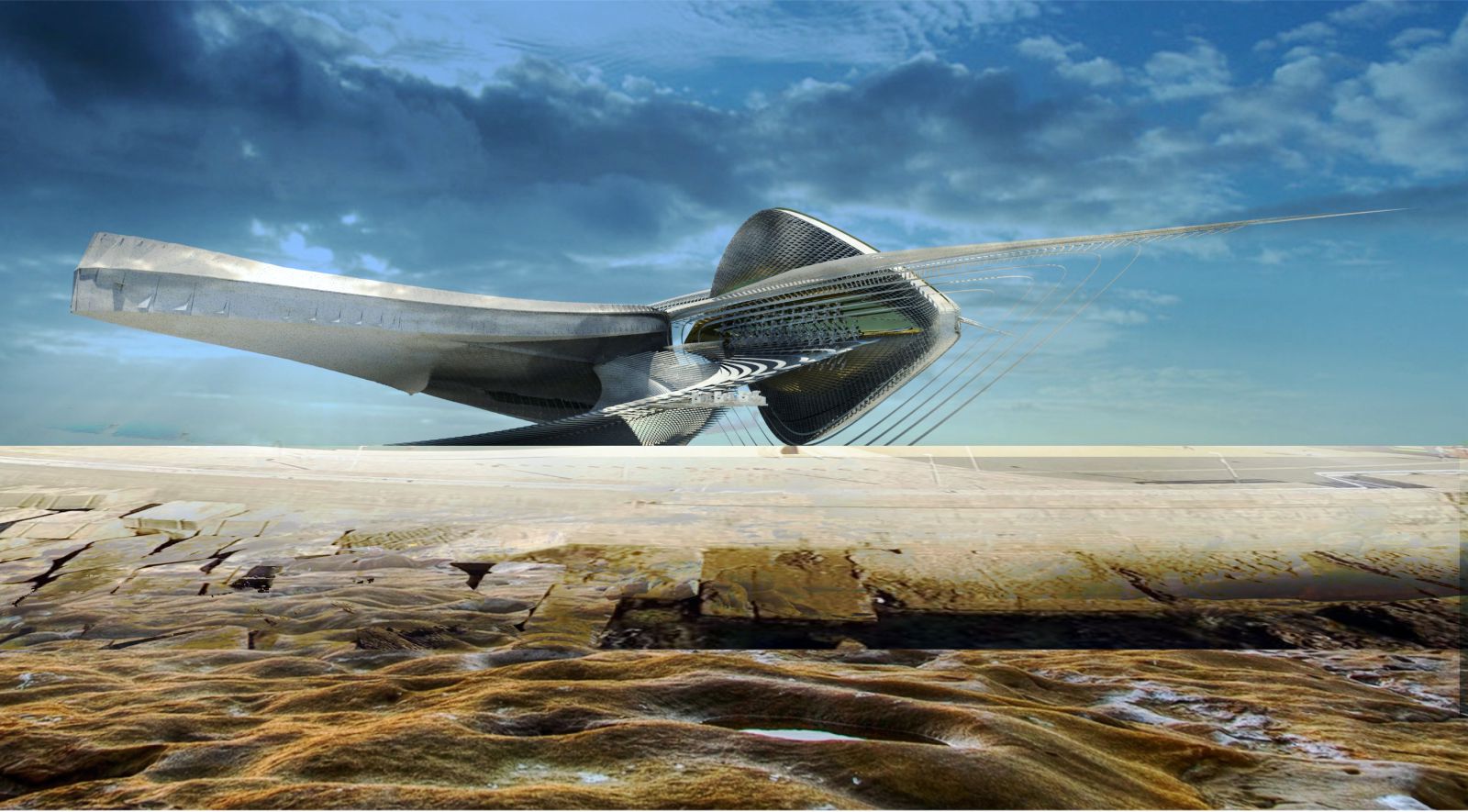The building uses the oscillat-ing water column principle to harness wave energy, converting this mechanical energy to generate electricity; it also accommodates a sculpture gallery. This symbiotic program merges a small power plant capable of producing up to 300kW with a sculpture gallery to redefine typologies and accom-modate self-sufficiency by generating sustainable energy that is fed back into the grid. This project aims to supply energy to 200 households and businesses within its vicinity.
The building overhangs the coastline; projecting over the existing promenade, it is cantilevered and partly sub-merged into the sea, angled at 45 degrees to the coastline for maximum wave exposure. Similar to the nearby jetties, it increases wave generation as swell refracts around it to produce high-quality right-handers. The partly submerged projected element is designed to function as an oscillating wa-ter column, increasing tidal strength on impact with the building and reducing land erosion.
The an-gle of the coastline sculpture gallery matches the angle of the swell, which, in turn, creates point break waves that do not lose their strength as they travel. The architecture influences the waves. It is not an obedient structure accommodating its environment. Instead, it stands apart from it, making us reconsider our relationship with this environment and our immediate context. As wave energy converges against the projecting building element and sculpture gallery, it activates the oscillating water column section.
The art gallery comprises two areas connected by walkways and ramps – it rises out of the promenade, its primary steel structure sections rolling into each other like waves. An array of turbines line the partly submerged power plants oscillating on the water column surface. As seawater flows into the submerged chamber, airflow pressure increases, forcing the five Wells turbines located at the top of the chamber to rotate as the seawater rises and falls. Wells turbines always rotate in the same direction regardless of airflow direction.
This mechanical energy is converted into electricity with an average 70% efficiency rate. Generators are positioned on the promenade to the rear of the building, revealing the very nature of the architecture and emphasising this hybrid typology. The sculpture gallery is woven into the power plant structure – its roof rolls like a point break wave between both the energy plant and the sculpture gallery. The steel-clad layered ceiling mimics the waves by changing densities across its section from structural to cladding the self-supporting structure which projects the turbine water column into the surf.
The gallery’s open-plan space simulates breaking waves underwater to create a calm backdrop for the exhibited mobiles and sculptures. The roof’s cross-section comprises a frequency of densities that relate to the turbines in scale, whereby movement is the dynamic criteria for both parts of the design, be it mechanical or representational and sculptural. The waves which crash against the turbine surface are drawn up into the oscillating water column, splashing seawater onto the art gallery’s roof, thus adding to the dynamic nature of the immediate environment, program, and architecture.
This architecture does not solely blend in a submissive manner with the elements but also defines their movements to produce clean energy. It is not simply a subtle design for a static environment but it rather engages with nature’s forces. Russian constructivism was inspired by the industrial revolution and factories, reflecting the modern age by representing machine-influenced designs. Following a similar intention, this architecture brings together a new type of industrial typology, a synthesis between two extremely different programs working in sync like the crashing waves that sustain it.
An architecture that embraces the environment it is built into by not being overly cautious, it uses the environment’s characteristics to generate clean, sustainable energy, without affecting the quality and nature of the landscape. Preservation of the environment should be embraced using the environment efficiently and working with it to sustain us and itself. This demands a fine balance between intervention for a purpose and complete merging with the existing, which I find rather empty architecturally. Source and images Courtesy of Margot Krasojevic.
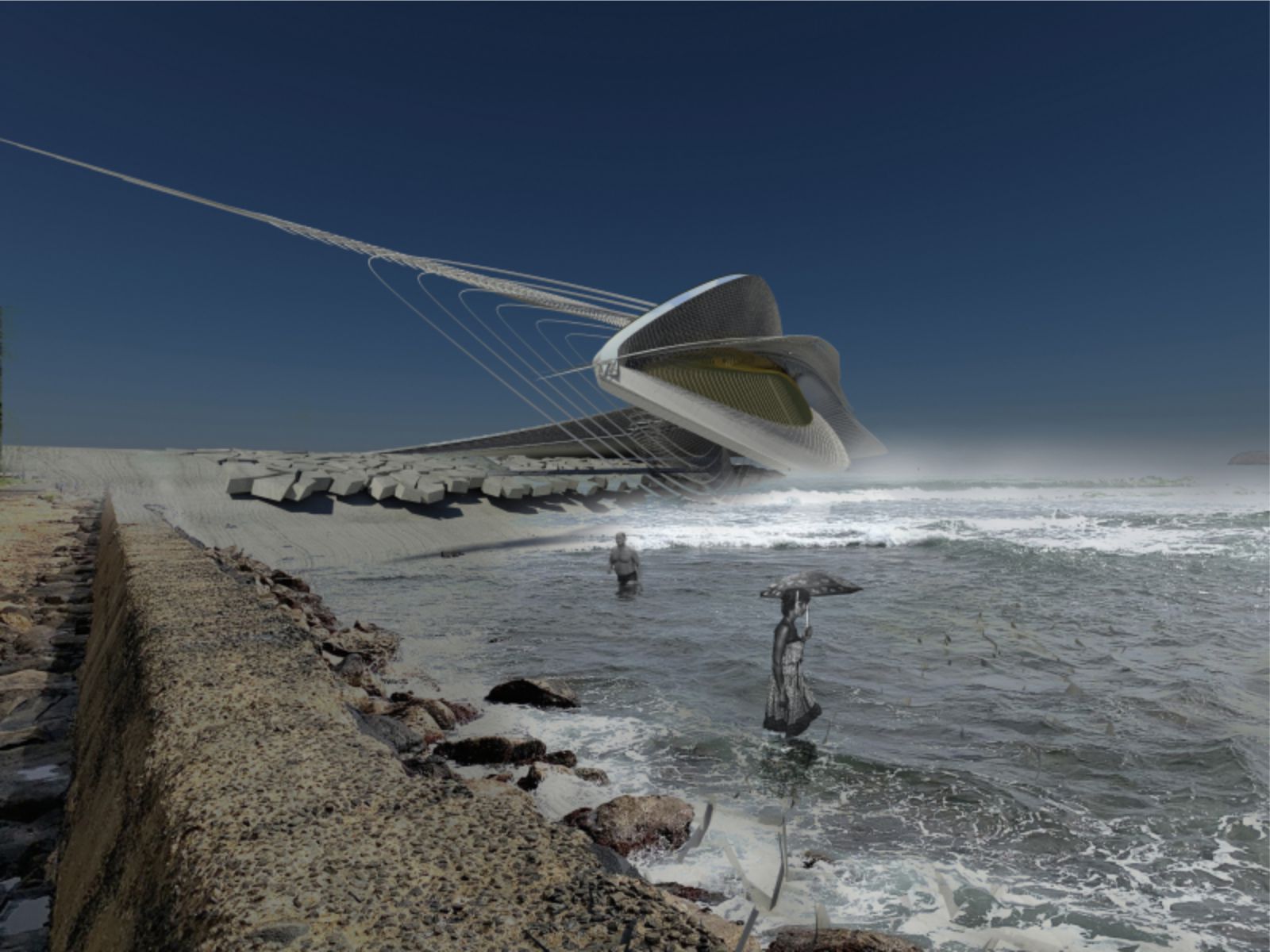
Image © Margot Krasojevic 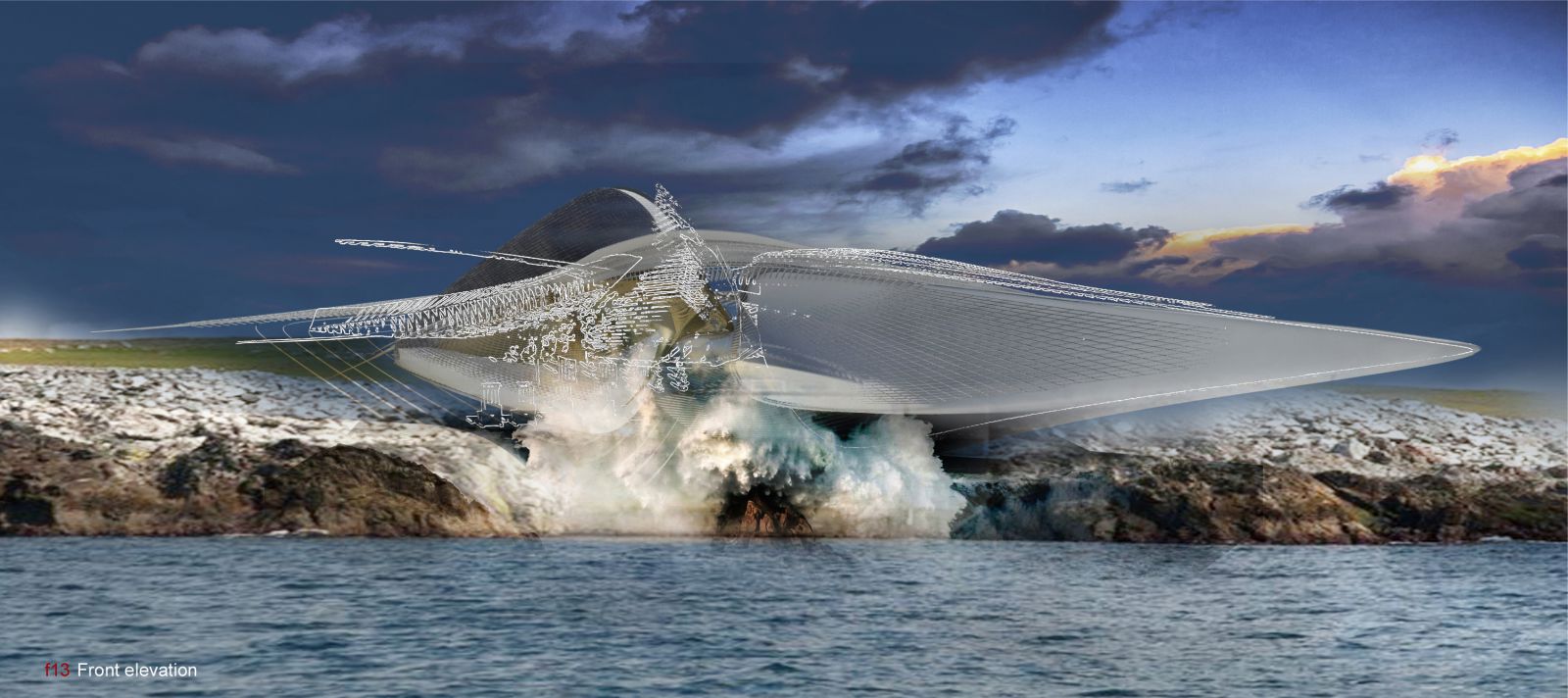
Image © Margot Krasojevic 
Image © Margot Krasojevic 
Image © Margot Krasojevic 
Image © Margot Krasojevic 
Image © Margot Krasojevic 
Image © Margot Krasojevic 
Image © Margot Krasojevic 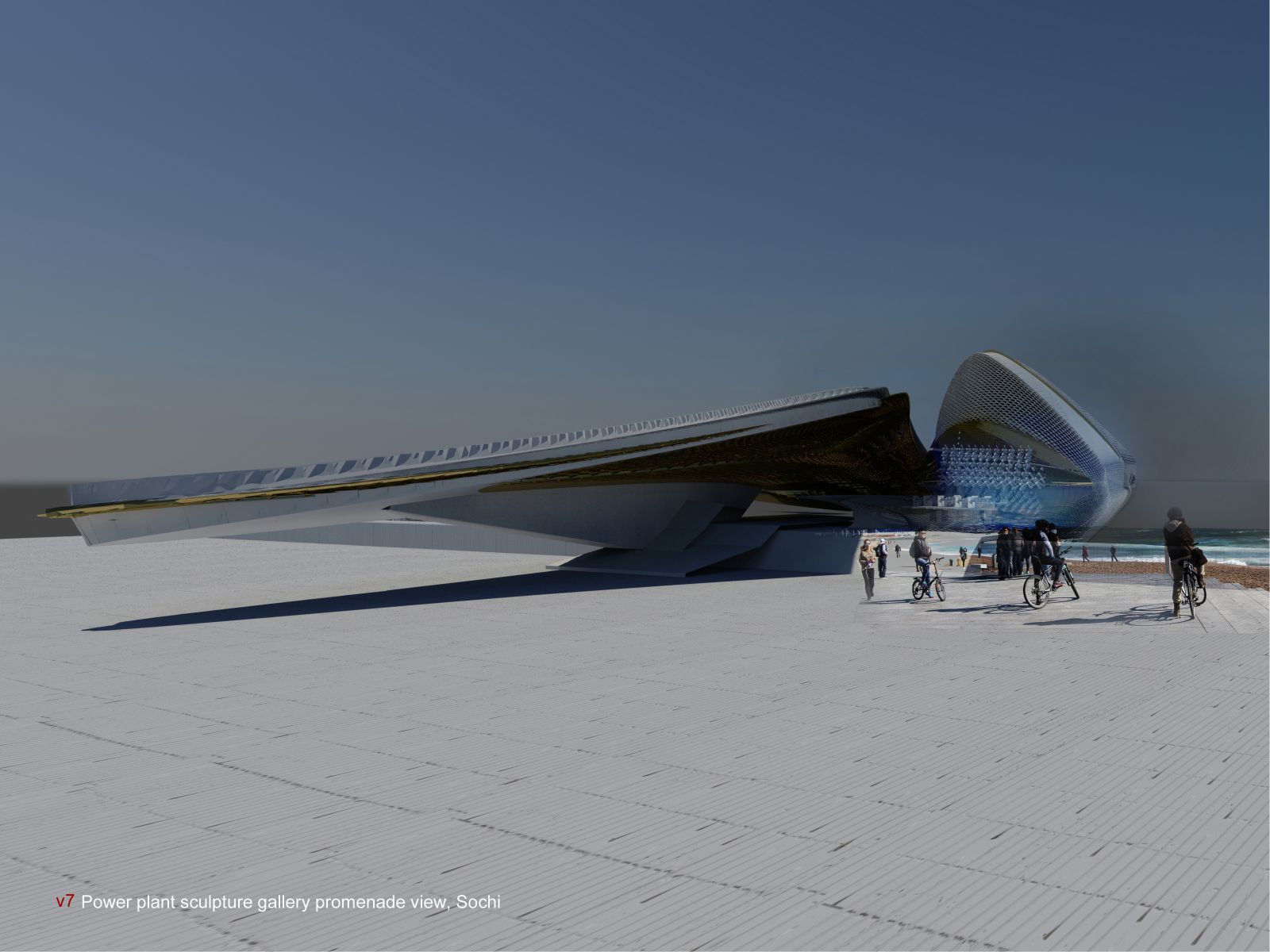
Image © Margot Krasojevic 
Image © Margot Krasojevic 
Image © Margot Krasojevic 
Image © Margot Krasojevic 
Image © Margot Krasojevic 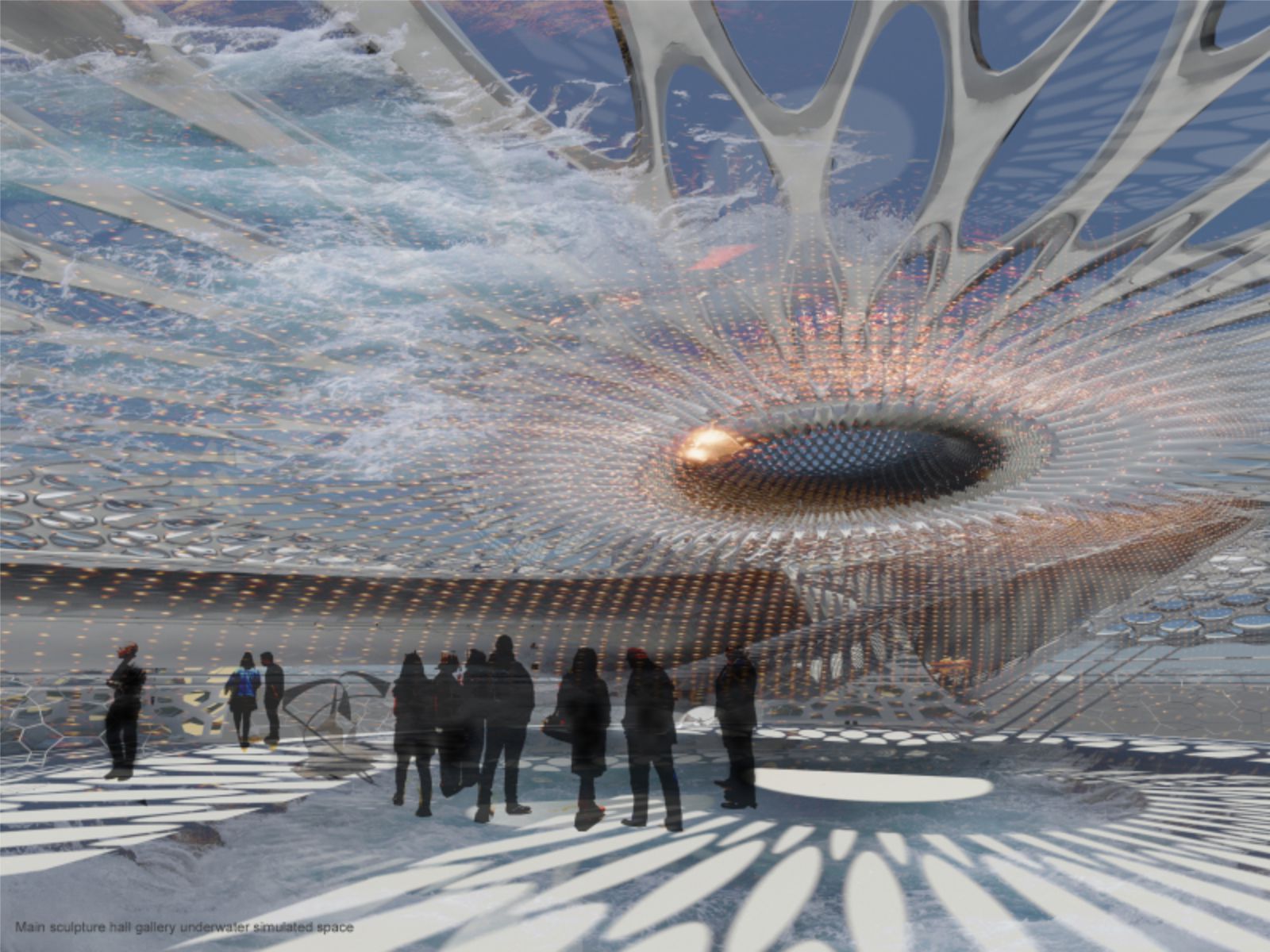
Image © Margot Krasojevic 
Image © Margot Krasojevic 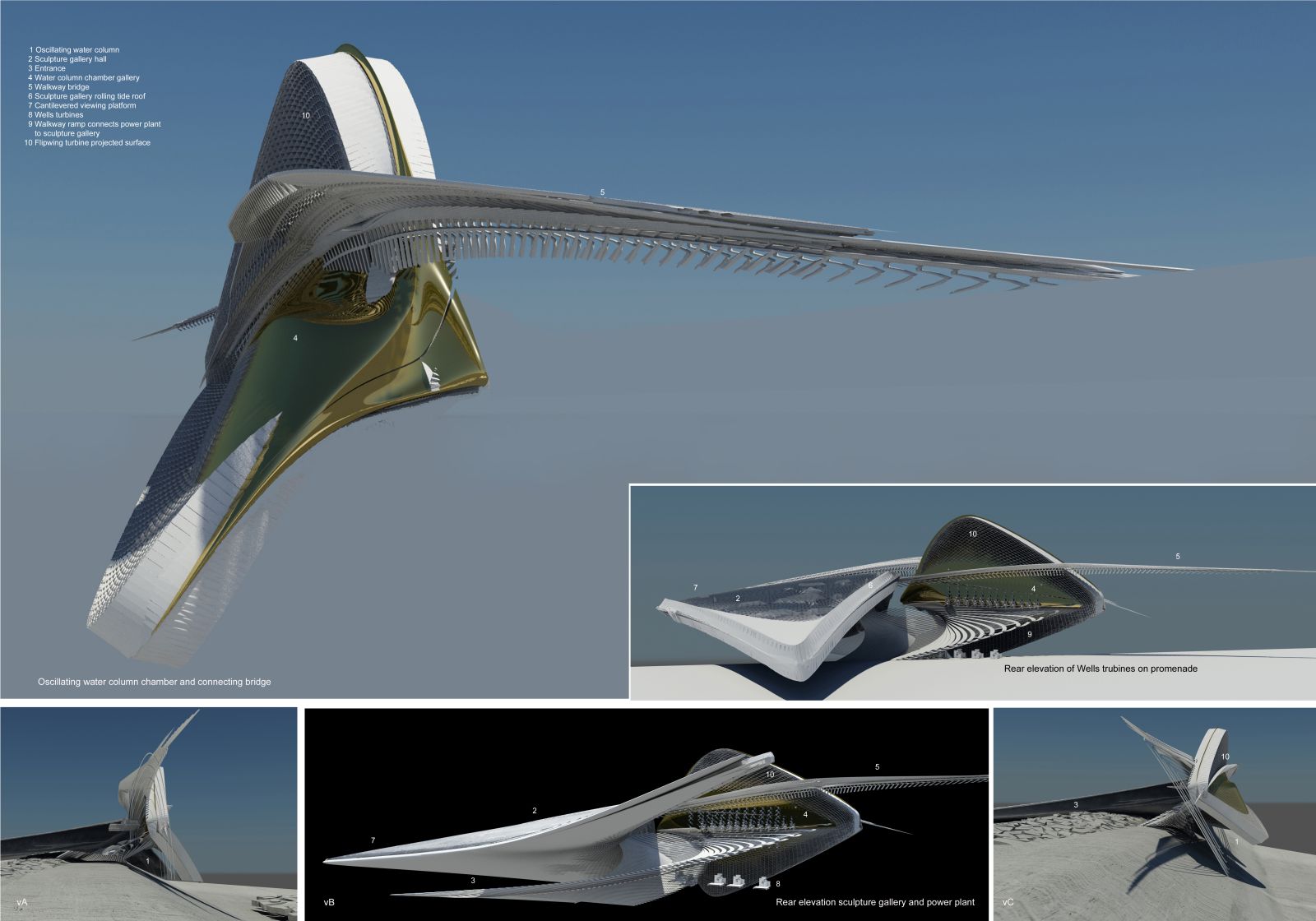
Bridge Walkways 
Diagrammatic Proportions and Surface Folds 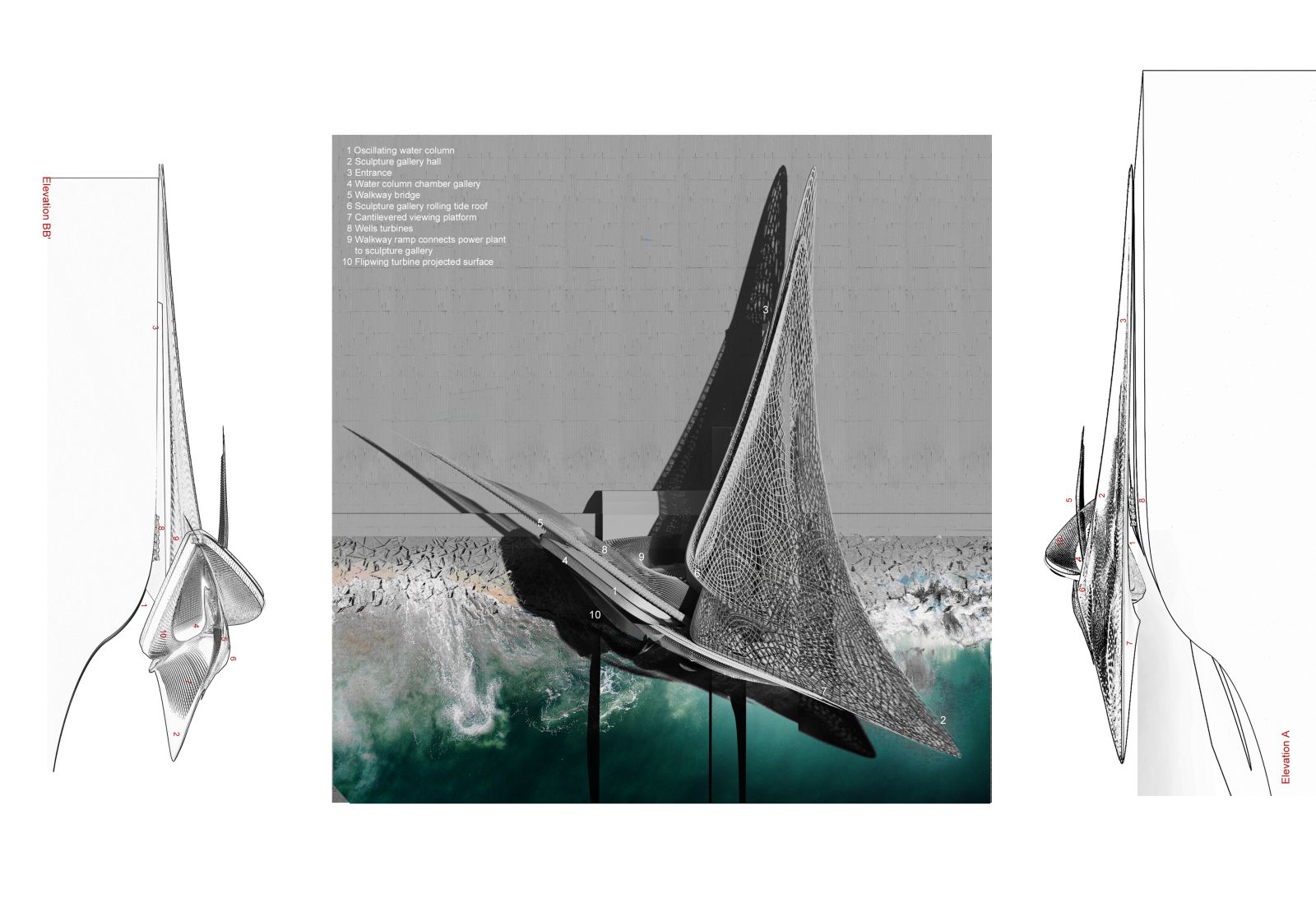
Plan 
Plan of element 
Plan and Section 
Plan and Axo

